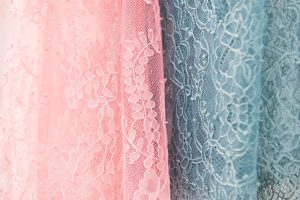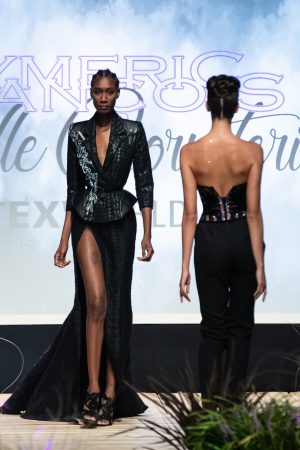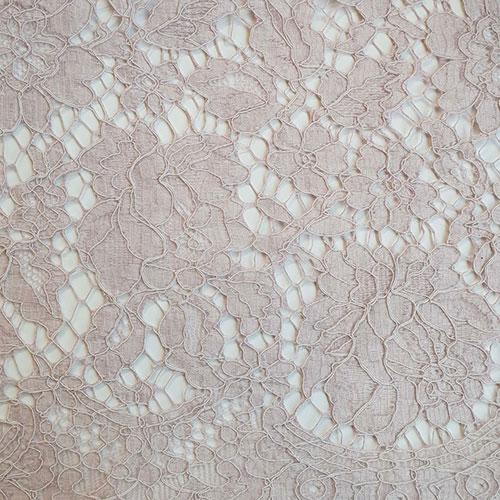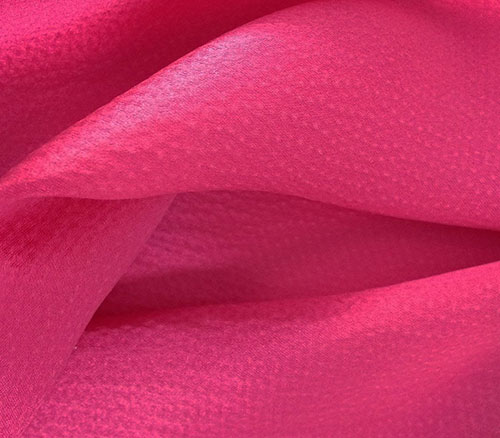FW
A new survey of 1,057 U.S. consumers by supply chain software provider JDA reflects relative public disinterest in the tariff-centric China trade conflict—that is, until people realise how their bank accounts could stand to lose in the Sino-American saga.
While most (85 percent) expressed some familiarity with the protracted war, nearly two-thirds (65 percent) claimed they haven’t amended their spending behaviors in any way as a result, but the vast majority (83 percent) are at least a little bit worried the dispute will send retail prices soaring.
Despite that evident concern, when asked how the trade war could affect their holiday shopping budgets versus last year, most (46 percent) said the specter of tariffs would not change their planned spending, though an equal percentage claimed they’ll be tightening the purse strings somewhat—or significantly.
The next round of tariffs is poised to take effect on Oct. 15, when the 25 percent duty on $250 billion worth of China imports is set to rise to 30 percent unless President Trump and the Chinese delegation hammer out a new deal at their meeting Friday. But it’s the planned Dec. 15 tariffs on $300 billion worth of goods that lands at a most inopportune time in the holiday shopping season.
However, the JDA’s survey reveals that nearly one-third (31 percent) of consumers didn’t intend to shop earlier to avoid the potential tariffs while another 20 percent had no idea of what they planned to do.
The IAF sponsored the second edition of the Keqiao World Textile Merchandising Conference held on September 27, 2019 in Keqiao, China.
The conference was inaugurated by Han Bekke, President, IAF and Kihak Sung, President, ITMF. Sun Ruizhe, Chairman, CNTAC, presented a strong overview of the Chinese apparel industry at the conference which was also attended by General Matthijis Crietee, Secretary General, IAF.
China’s apparel market is transitioning fast, with the domestic market for customised garments already valued at more than € 20 billion. Sun highlighted the industry’s focus areas including innovations, green developments and collaborations. These were backed up by a strong policy agenda and plenty of funds.
Though the conference was held in a context of slowing global trade the general mood at the event was nevertheless positive. The industry realised that the total demand for clothing, especially in the Asian region, continues to grow.
H&M Group has acquired a majority stake in Sellpy, a re-commerce platform that sells second-hand clothes, to strengthen its efforts to become fully circular and support its global expansion plans.
The fast fashion retailer first invested in the re-commerce business in 2015 and since then has been participating in all investment rounds. With this investment, the retail group has acquired approximately 70 per cent stake in Sellpy, which makes it a majority shareholder.
H&M has invested around SEK50 million (£4.08 million) in Sellpy since 2015, and SEK92 million in pre-existing investor commitments to private equity – also known as secondaries.
Moreover, the retail giant plans to invest SEK60 million more via two separate installments within the next few years.’ With this, H&M will have approximately 74 per cent stake in Sellpy.
Sellpy, established in 2014, could grow its current offering ‘into a complete platform for second-hand fashion’ per the outlet. It is now all geared up for a worldwide expansion starting with Germany.
With Future Retail announcing its intention to acquire retail infrastructure assets from group company Future Enterprises, its board recently approved the acquisition of the retail infrastructure assets up to maximum limit of Rs 4,000 crore of Future Enterprises in one or more tranches.
These retail infrastructure assets, though currently used by Future Retail for its large and small format stores, are owned by Future Enterprises. Future Retail pays lease rentals to Future Enterprises for these assets.
The deal will help both the companies. For Future Retail, it would significantly reduce rental costs, with the company expecting an up to Rs 650 crore reduction in annual lease rentals. The transaction would help deleverage Future Enterprises, which had a total debt of Rs 6,544 crore as of 31 March.
The deal would also help reduce inter-corporate linkages between entities of the Future group, simplifying its structure. It would result in cessation of all corporate guarantees from Future Retail to the lenders of Future Enterprises.
Finisterre has become the first fashion brand to use garment bags made from Aquapak polymer. The brand has already introduced the new packaging in a few select knitwear lines, while a full roll out is expected in February, when the packaging will be included with all garments in the spring 2020 collection. Garment bags made from Aquapak polymer do not break down into microplastics.
The collaboration is a result of Finisterre’s commitment to eradicate single-use, non-degradable plastic in 2018. Believing that ‘single use is no use’, Finisterre’s discovered that garment bags made from Aquapak’s hot water soluble Hydropol are inherently anti-static, are marine safe and non-toxic. They do not break-down into harmful microplastics in the ocean or on land hence ‘leave no trace’.
The Finisterre bag is made from the hot water soluble version of Aquapak’s Hydropol material. This enables it to be recycled or be dissolved and disposed of safely and benignly in waste water systems.
According to valuation consultancy, Brand Finance China’s value increased by 40 per cent in 2019. Globally, developing economies on an average saw 31.3 times faster brand value growth over the past year than developed ones. The average year-on-year nation brand value growth among developing economies stood at 13.9 per cent compared to as little as 0.4 per cent for developed economies. The United States recorded a brand value growth of seven per cent over the past year.
The US and China, the two largest economies in the world, have been at loggerheads since July 2018 in a bitter trade war, with tariffs imposed by both sides on billions of dollars’ worth of imports and exports. Despite this, China’s brand value has defied expectations of a slowdown, benefitting from the success of some of its most dominant brands, including ICBC, Huawei and Alibaba. The last two have incorporated strong marketing strategies that mirror their international counterparts and have proved themselves as legitimate competitors to western brands.
Every country aims to drive some form of competitive advantage for their products through the country’s brand image. Some use tourism advertising, some FDI campaigns, and some global events such as the Olympics.
According to recent study by the US Fashion Industry Association (USFIA), despite slipping to the sixth position as a preferred sourcing destination for US-based apparel and fashion companies, majority of the buyers expressed an interest in increasing their sourcing from the country in 2019.
Bangladesh’s RMG exports to the USA, from January-August 2019, grew by 11.81 percent compared to that in the corresponding period of 2018. The data from the Office of Textiles and Apparel reveals that the country earned US $4.08 billion in the first eight months of 2019 from its RMG exports as against US$3.65 billion earned during January-August period of 2018.Experts and exporters opined that this growth was possible due to shifting work orders from China in the wake of trade war.
A recent study of Asian Development Bank also stated the trade war between China and the US has become a boon for Bangladesh as the country exported a total of US$4.23 billion in textile and apparel items to the US during January-August period of 2019.
After the Rana Plaza building collapse in 2013, Bangladesh’s apparel exports to US declined in 2014 and stood at US$4.83 billion which was US$4.95 billion in 2013.
In 2015, exports rose to $5.40 billion but continued declining in next two consecutive years. In 2017 and 2018, the country earned US$5.06 billion and $5.40 billion respectively from garment exports to US.
Expressing serious concern over lower cotton output, the All Pakistan Textile Mills Association (APTMA) recently urged the Pakistani government to remove duty and taxes on the import of raw cotton to support the domestic textile industry.
APTMA urged the government to immediately withdraw the 3 per cent customs duty, 2 per cent additional duty and 5 per cent sales tax imposed on the import of raw cotton to enable the textile industry to meet its requirements for domestic as well as for export orders.
Initial estimates show there is a shortfall of 5 million cotton bales between demand and supply during this season. Domestic raw cotton prices are now higher than those of imported cotton and if this continues, then the textile industry will be rendered uncompetitive. The initial cotton crop estimate was around 15 million bales; later it was revised up to 12 million bales and now as per second revision, the cotton crop may be 10.2 million bales. However, recent market survey suggests cotton output at the end of this season will be even lower than 10 million bales as against the domestic industry demand of 15 million bales. Comparative analysis of cotton arrival up to October 1 this year versus the same day last year shows a 39 per cent decline.
"With 1014 exhibitors from 25 countries, Texworld Paris once again asserted their dominance as undisputed leaders of sourcing for fabrics, components, trimmings and materials for the clothing industry. Spread across three halls in September, these remarkable events for anyone involved in creating fashion proved to be a real hub for finding inspiration and for procurement aimed at European and global buyers as a whole."
 With 1014 exhibitors from 25 countries, Texworld Paris once again asserted their dominance as undisputed leaders of sourcing for fabrics, components, trimmings and materials for the clothing industry. Spread across three halls in September, these remarkable events for anyone involved in creating fashion proved to be a real hub for finding inspiration and for procurement aimed at European and global buyers as a whole. The commitments made by Messe Frankfurt to encourage expressions of creativity in the major producing countries of Asia or its endeavours to provide greater exposure for companies, which are adopting new approaches as regards sustainable development, have been rewarded this year.
With 1014 exhibitors from 25 countries, Texworld Paris once again asserted their dominance as undisputed leaders of sourcing for fabrics, components, trimmings and materials for the clothing industry. Spread across three halls in September, these remarkable events for anyone involved in creating fashion proved to be a real hub for finding inspiration and for procurement aimed at European and global buyers as a whole. The commitments made by Messe Frankfurt to encourage expressions of creativity in the major producing countries of Asia or its endeavours to provide greater exposure for companies, which are adopting new approaches as regards sustainable development, have been rewarded this year.
The ranges for sustainable sourcing, especially noticeable this year at Texworld Paris, represented a selection, which is growing in size, of almost 80 suppliers, who offered fabrics with GOTS (Global Organic Textile Standard), Organic Exchange, Bluesign, SA8000 or WRAP certifications, as part of a very comprehensive choice of lines and materials.
which is growing in size, of almost 80 suppliers, who offered fabrics with GOTS (Global Organic Textile Standard), Organic Exchange, Bluesign, SA8000 or WRAP certifications, as part of a very comprehensive choice of lines and materials.
Special signage this year allowed visitors to identify added environmental value offered by exhibitors, depending on whether it related to eco-friendly or bio-based materials, environmentally friendly processes or certified social standards and fair trade, or all of these advantages together (eco-friendly materials and procedures plus social standards). Similarly, following the “Artisan” circuit, which was first introduced in February and which was packed during this autumn’s show, allowed buyers on the lookout for short runs to find suppliers whose offers matched their requirements and were frequently based on traditional craftsmanship.
As ever, Texworld‘s artistic directors showcased the current styles at the show in two Trends areas, the general Trends Forum and the Sustainable Trends Forum, in order to demonstrate the creative capacity of exhibitors at Texworld Paris. Going by the name Réenchantement, the trends focussed on four themes: Apocalyptic Fascination, Immemorial Spell, Synthetic Dazzle and Astral Ecstasy. Both visitors and exhibitors signalled their approval. It allowed everyone to be organised and to explore the different trends presented at Texworld Paris from a purely creative angle in just one place.
The major players in the clothing sector for their part targeted their searches towards the additional services offered by the 29 exhibitors in the Elite segment. This area once again was a resounding success with buyers, in particular European ones, who recognised the quality offered by the selected exhibitors. These firms, known for their quality, competitiveness, responsiveness and services, are able to provide a response for the most cutting-edge and discerning markets for global fashion designer labels. There were seven newcomers, including six Turkish firms and one Chinese company. This did not go unnoticed by contractors. They were very busy in this area that is particular appreciated by ready-to-wear labels: “a consistent and interesting space that is very suitable for making for high-calibre contacts” explains Omar Kaskas, manager at Kaskas Co.
This blend of competitive and creative approaches was rounded off this year by a series of exhibitions, such as that devoted to the Dinan International Festival for Fashion Designers, where prize winners (Anaël Paris, Daniela Schmid and Damko) showed their collections in a fashion area located between Hall 2 and 3. This extremely busy area also hosted the Replica exhibition, organised around a creative dialogue between students at HEAR and Chinese clothing manufacturers. Supported by the Messe Frankfurt France trade fairs, the design students at Haute École des Arts du Rhin (HEAR) presented the results of their discussions and their work with five Chinese clothing manufacturers, weavers and embroiderers, who were exhibitors at the Apparel Sourcing and Texworld Paris shows.
To be held from October 16-17, 2019 in London, Textile Forum will showcase around 100 collections of quality fashion fabrics – from silks, laces, embroideries and cottons through to woolens, leather and faux fur - an increasing number of which tell a sustainable, eco friendly story.

The show will feature fabric companies such as Litmans, Bennett Silks, Partap, Ringhart, JMR and Carrington alongside new exhibitors including Abraham Moon & Sons, with its woolens, digital printers Faering, fur fabric specialist CRS, Spirit Lace Enterprise and London Trimmings.

Michael’s Bridal Fabrics will launch its first range of eco friendly fabrics at the show. The brand will introduce a new duchess satin range with recycled polyester, a recycled polyester/silk Mikado and the company's first French lace with organic cotton, combined with viscose.
Pongees will introduce more classic and on trend colors within its washed crepe de chine, washed georgette, hammered satin, jersey and twill qualities.












